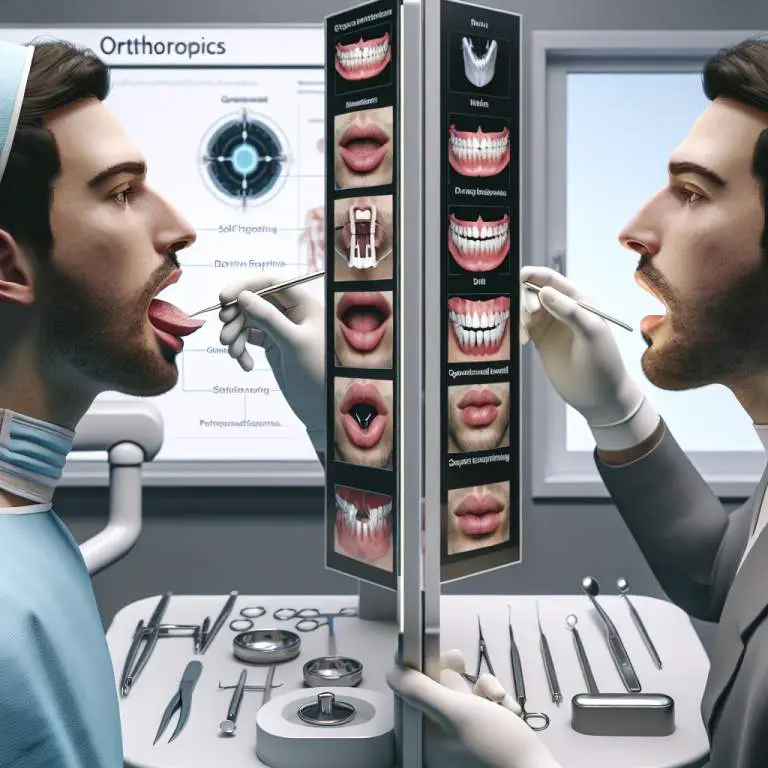Can mewing provide results as quickly as dermal fillers for the jawline?
Mewing, a technique that involves proper tongue posture to potentially reshape the jawline, does not offer quick results like dermal fillers. Dermal fillers provide immediate enhancements to the jawline’s appearance after treatment. In contrast, mewing requires consistent practice over months or even years to possibly see changes. Therefore, for someone seeking quick results, dermal fillers are a much faster option than mewing.

How does mewing work to reshape the jawline?
Mewing is a technique that involves placing your tongue against the roof of your mouth. This position is supposed to help change the shape of your jawline over time. People who support mewing say it can make your jawline look better by making small changes in how you hold your mouth.
The idea behind mewing is that it applies gentle pressure on the maxilla (the upper jaw) and mandible (the lower jaw). This pressure might encourage the bones to grow in a certain way. It’s kind of like how braces work on teeth, but for your whole jaw. However, it’s important to remember that everyone’s body reacts differently, so results can vary a lot from person to person.
What are dermal fillers and how do they enhance the jawline?
Dermal fillers are substances that doctors can inject into different parts of your face, including the jawline. These fillers are usually made from materials that are safe for your body. They add volume and can change the shape of the area where they’re injected. For people looking to have a more defined jawline quickly, dermal fillers can be an attractive option.
When injected into the jawline, dermal fillers can make it look sharper and more pronounced. This is because they literally “fill” in areas under the skin, making those areas appear fuller and more sculpted. The process is pretty fast and doesn’t require surgery, which is why many people like it.
Can mewing provide similar results to dermal fillers in terms of jawline definition?
Mewing and dermal fillers aim to improve the appearance of the jawline but do so in very different ways. Mewing relies on changing how you use your muscles and where you place your tongue, hoping for gradual changes over time. On the other hand, dermal fillers give immediate results by adding volume directly where it’s needed.
While some people report seeing improvements in their jawline definition through mewing, these changes are often subtle and take a long time to become noticeable. Dermal fillers offer a quicker fix with visible changes right after treatment. However, whether mewing can match the level of definition provided by dermal fillers remains debatable among experts.
What is the typical timeframe for seeing visible results from mewing?
The timeframe for seeing results from mewing varies widely among individuals. Since it depends on factors like age, genetics, and how consistently someone practices mewing, there’s no one-size-fits-all answer. Generally speaking, younger people might see changes faster because their bones are still growing and adapting.
For most people practicing mewing, noticeable changes could take months or even years to appear. It requires patience and consistency in maintaining proper tongue posture throughout each day. Unlike quick cosmetic procedures like dermal fillers, mewing is more about slow progress over time rather than instant gratification.
| Method | Initial Results | Long-Term Results |
|---|---|---|
| Mewing | 3-6 months (subtle) | 1-2 years for noticeable changes; ongoing improvement with continuous practice |
| Dermal Fillers | Immediate | 6-18 months; varies by type of filler and individual metabolism, maintenance treatments required for sustained effect |
How long do dermal filler results last compared to mewing outcomes?
Dermal fillers provide a quick fix to enhance the jawline, showing results almost immediately after the procedure. These results typically last between 6 to 18 months, depending on the type of filler used and the individual’s metabolism. On the other hand, mewing is a more gradual process. It involves training your tongue to rest in a specific position, which over time can lead to changes in jawline definition.
While mewing outcomes can be permanent since they involve altering your facial structure through muscle retraining and bone remodeling, it requires consistent effort over years. Unlike dermal fillers that offer a temporary solution with periodic maintenance, mewing demands patience and persistence for lasting changes.
Are there any risks associated with mewing as opposed to dermal fillers?
Mewing is considered relatively safe since it’s a natural method of reshaping the jawline by adjusting tongue posture. However, if done incorrectly or too aggressively, it could potentially lead to jaw pain or misalignment issues. It’s important for individuals to research properly or consult with professionals before attempting drastic changes through mewing techniques.
Dermal fillers, while generally safe when performed by qualified professionals, carry their own set of risks including infection, allergic reactions, or asymmetry in facial features. Additionally, there’s always a risk of dissatisfaction with aesthetic outcomes which might require further correctional procedures.
What are the cost differences between pursuing mewing and getting dermal fillers?
Mewing is an attractive option for many because it costs virtually nothing. It relies on self-discipline and consistency in practicing proper tongue posture throughout the day. There are no medical appointments or products necessary unless one opts for guidance from a professional which might incur some consultation fees.
In contrast, dermal fillers can be quite expensive. The cost varies widely depending on geographic location, practitioner experience, and the amount of filler required but typically ranges from several hundred to thousands of dollars per session. Considering that these treatments need to be repeated every 6 to 18 months to maintain results, the long-term financial commitment can be significant.
Final Thoughts
Choosing between mewing and dermal fillers depends on individual preferences regarding time investment, risk tolerance, and budget constraints. Mewing offers a cost-effective but slower approach to reshaping the jawline naturally without invasive procedures. Meanwhile, dermal fillers provide immediate results but come with higher costs and potential risks associated with medical procedures.
Ultimately, whether opting for mewing or dermal fillers—or even combining both approaches—it’s crucial for individuals to make informed decisions based on thorough research or consultations with healthcare professionals specialized in dental or facial aesthetics.







